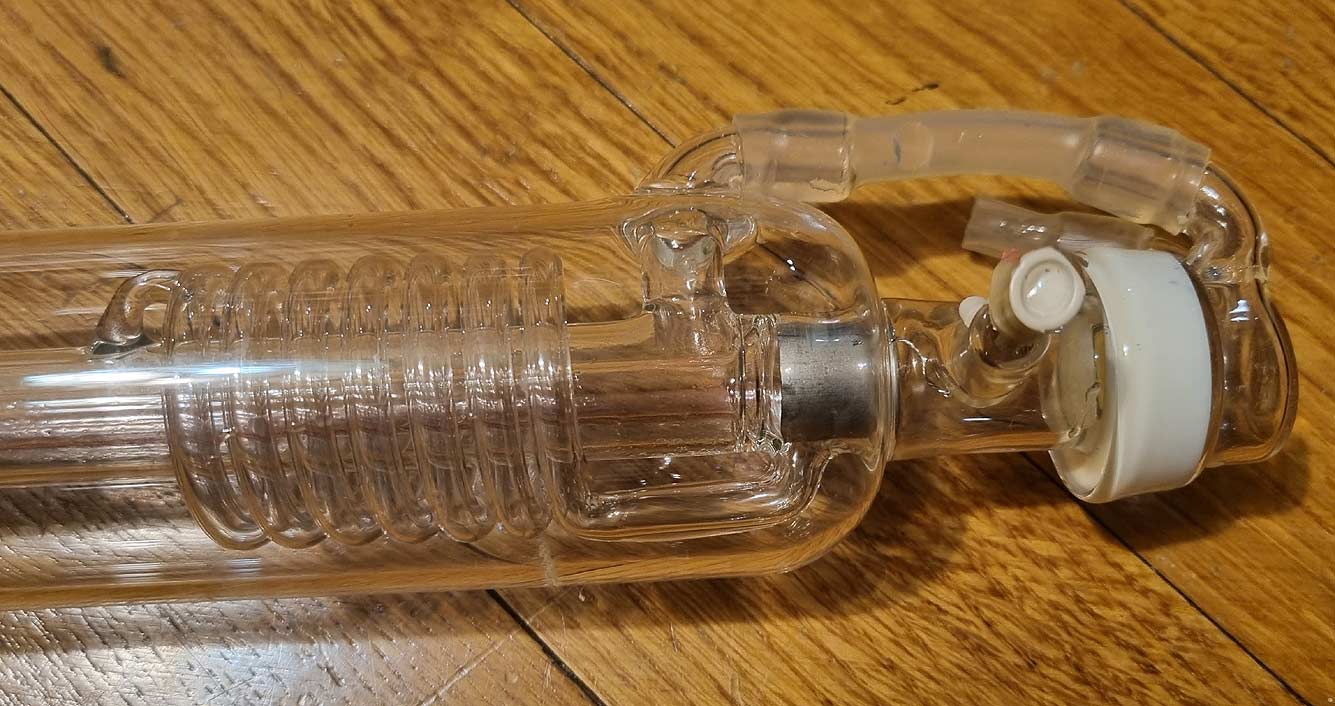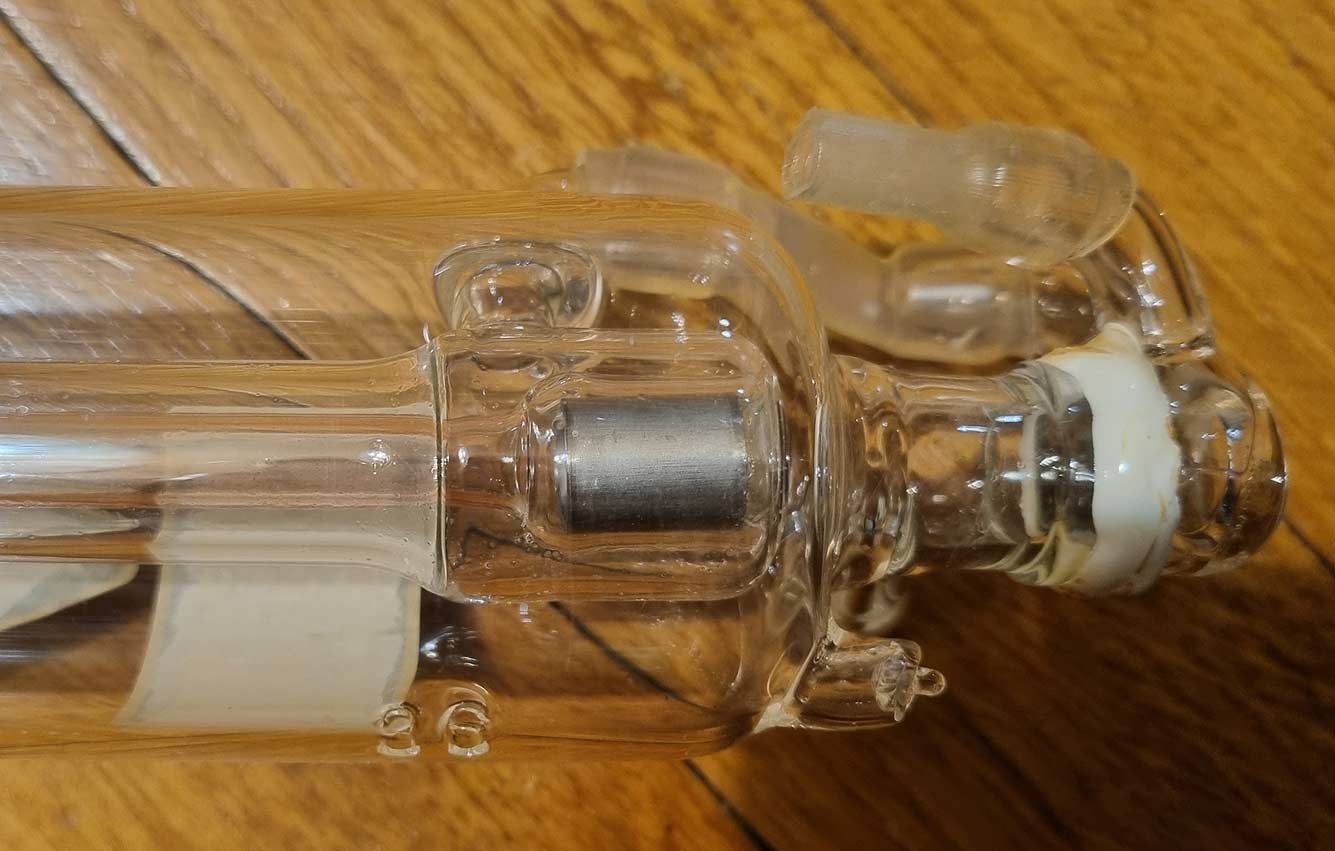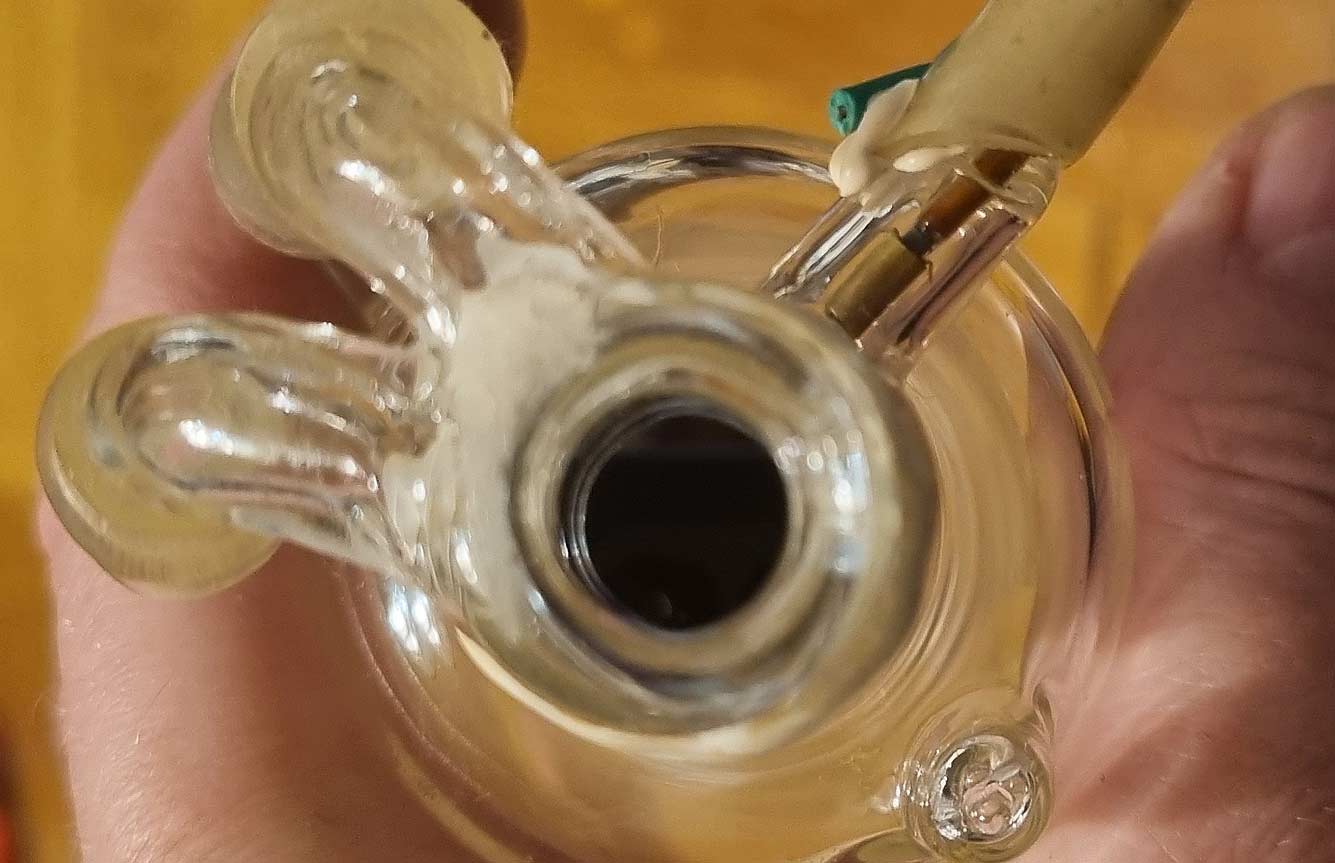(AI translated)
My CO2 laser has been unused for a couple of years. Its tube degraded and started to weaken. About a year ago, it was still possible to cut paper and make some “applications.” Today I tried again – the tube lights up, but it doesn’t “heat” – it didn’t burn anything even a bit. The current through the tube is about 20mA, everything glows nicely, but it doesn’t lase. I took out the tube and replaced it with another one (which was like new, but I couldn’t test it well because the cooling system’s hoses had stiffened). I brought the old tube home – it will be the topic of an article. And I can still torture it before breaking it. I have the desire to apply alternating voltage to it…

No matter what the managers say, the power of a CO2 laser is directly proportional to the length of the tube’s resonator (and the tube itself). Theoretically, a tube with a thicker beam can be made, but the optics must be different accordingly, and focusing the beam is somewhat more challenging purely due to geometric laws. My tube is 40W max, its length between the mirrors is 67-70cm. The total length is about 80cm. You can’t push more watts into such a tube. And even 40W should be doubted.

This article is purely illustrative; nothing will be damaged yet. But here, we will explain why there is a glass spiral at this end. This is the “blind” end with a full mirror. The latter is additionally cooled with water. The spiral is needed to ensure that the electrical discharge occurs only inside the tube, not outside. This results in the electrical path through the center of the tube being significantly shorter than outside. The large difference is also necessary because it is very hot in the center of the tube, making it slightly harder for the electricity to flow than through simple N-He-CO2 gases. What is the purpose of the external reservoir? CO2 gases get blocked after discharge, and the molecules need some time to rest. This happens automatically – the laser operates from a constant voltage, and the gases in the plasma move from one electrode to another, then exit to the external reservoir, where they cool, recombine, and so on. Older and more powerful lasers used to have (and maybe still have) external pumps and even the ability to replace the gases. My first laser that I disassembled (it was damaged by storage in cold conditions) was precisely the “open,” “flowing” type. There, higher powers are possible because the gases are forcibly mixed.

The other end. You can see the electrode and a slightly more complex mirror cooling. Here, it is impossible to cool the entire area – the laser has to “exit.” Therefore, the construction is somewhat more complex. By the way, this is the “negative” end.

Here you can see the “half” mirror, most likely made of germanium. This mirror must be conductive to IR rays and withstand the effects of both the internal atmosphere and the external one.
What happened to this laser? I really don’t know – the electrodes don’t seem to have exploded. Helium definitely didn’t escape, and the plasma ignites perfectly. Either the mirrors have deteriorated, or the CO2 gases have disappeared somewhere (they can react with metal or glass. O2 corrodes with metal, and C settles on the walls). The inner tube has a purple tint – that’s normal, some special glass. The inner glass of a new laser is even darker and more purple.
